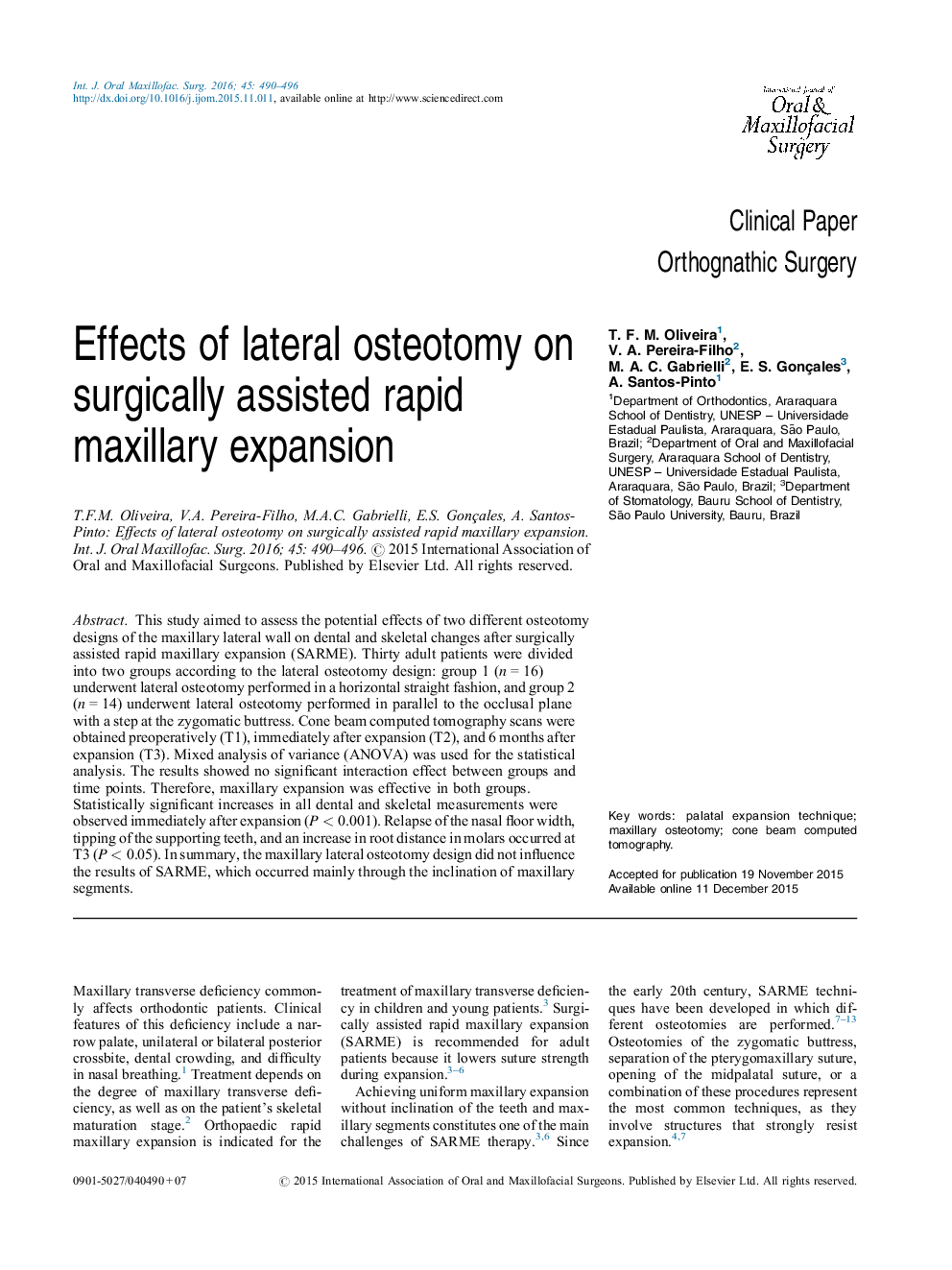| Article ID | Journal | Published Year | Pages | File Type |
|---|---|---|---|---|
| 3131798 | International Journal of Oral and Maxillofacial Surgery | 2016 | 7 Pages |
This study aimed to assess the potential effects of two different osteotomy designs of the maxillary lateral wall on dental and skeletal changes after surgically assisted rapid maxillary expansion (SARME). Thirty adult patients were divided into two groups according to the lateral osteotomy design: group 1 (n = 16) underwent lateral osteotomy performed in a horizontal straight fashion, and group 2 (n = 14) underwent lateral osteotomy performed in parallel to the occlusal plane with a step at the zygomatic buttress. Cone beam computed tomography scans were obtained preoperatively (T1), immediately after expansion (T2), and 6 months after expansion (T3). Mixed analysis of variance (ANOVA) was used for the statistical analysis. The results showed no significant interaction effect between groups and time points. Therefore, maxillary expansion was effective in both groups. Statistically significant increases in all dental and skeletal measurements were observed immediately after expansion (P < 0.001). Relapse of the nasal floor width, tipping of the supporting teeth, and an increase in root distance in molars occurred at T3 (P < 0.05). In summary, the maxillary lateral osteotomy design did not influence the results of SARME, which occurred mainly through the inclination of maxillary segments.
